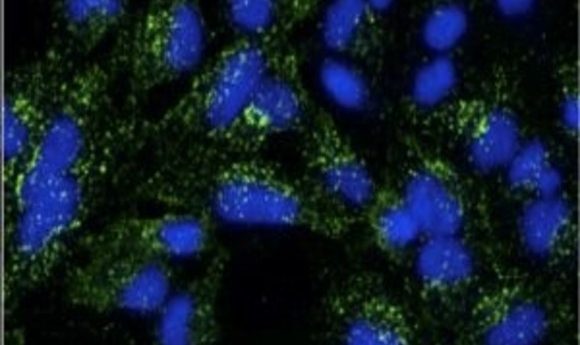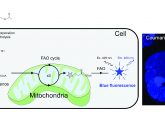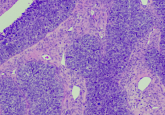Exosome tracking: tracking cellular deliveries

Researchers introduce a new method for tracking the activity of exosomes. What will we learn from following these key cellular messengers?
![]()
Green fluorescent exosomes inside live cervical cancer cells. Nuclei are shown in blue.
Credit: Arwyn Jones, Cardiff University
As chief cellular messengers, exosomes enter cells, deliver information, and mediate disease. The details of their function have evaded researchers, however, since most methods for monitoring exosomes compromised their natural behavior and properties. Now, a paper published in Nanoscale describes a new way to fluorescently label and track exosomes that function naturally.
“There is still a lot of mystery about the way exosomes change the property of cells they encounter and deliver important molecules to the inside of cells,” said Arwyn Jones, who led the study at Cardiff University. “By developing fluorescent exosomes with very similar physical properties to natural exosomes, we hope we and other researchers may better study exosome biology or explore ways of loading them with therapeutic cargo that could be delivered to cells to treat diseases.”
Unlike previous labeling methods that involved embedding fluorescent probes in the membranes of exosomes, Jones’s team labeled the outside surface of exosomes by linking thiol groups to maleimide-based fluorescent probes. When they added the modified exosomes to lung fibroblasts, they confirmed that the fluorescently labeled exosomes differentiated lung fibroblast cells into myofibroblasts just as effectively as their unmodified counterparts.
“We also were able to visualize [fluorescent exosomes] moving around cells in endosomes and lysosomes, entering via processes such as macropinocytosis, which exosomes may activate to gain entrance,” said Jones.
“Understanding how exosomes differentiate fibroblasts has implications for cancer research, and there is now significant interest in loading them with therapeutic cargo,” said Jones. “However, exosomes seem to be involved in so many processes, so our hope is that other researchers will use this labeling technique to study their impact in cancer, cardiovascular, and infectious disease, and many other areas of biology.”





